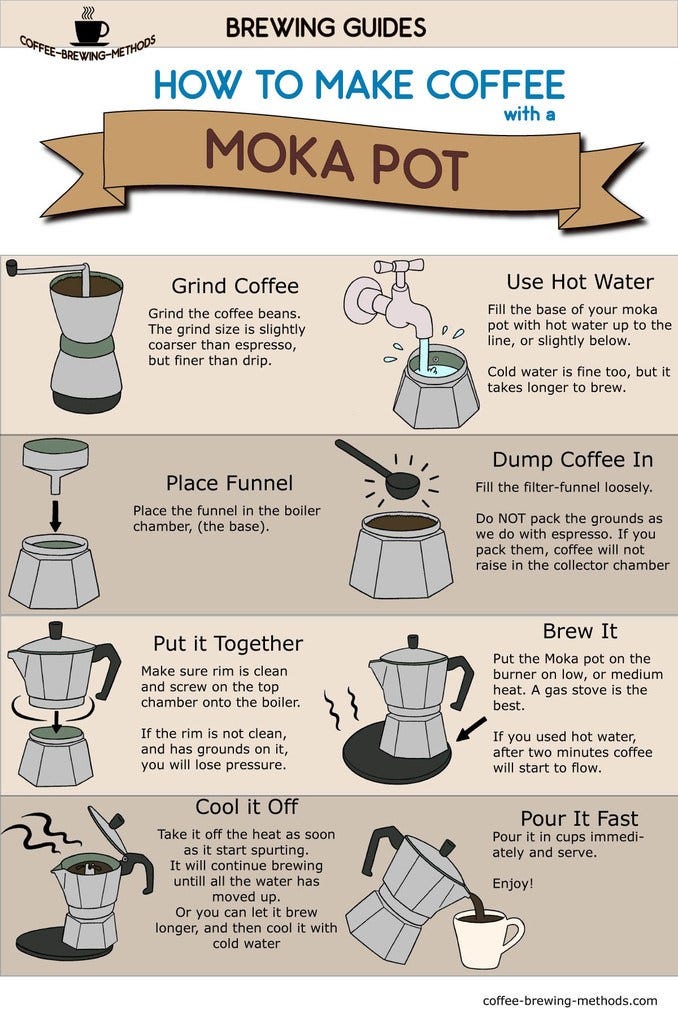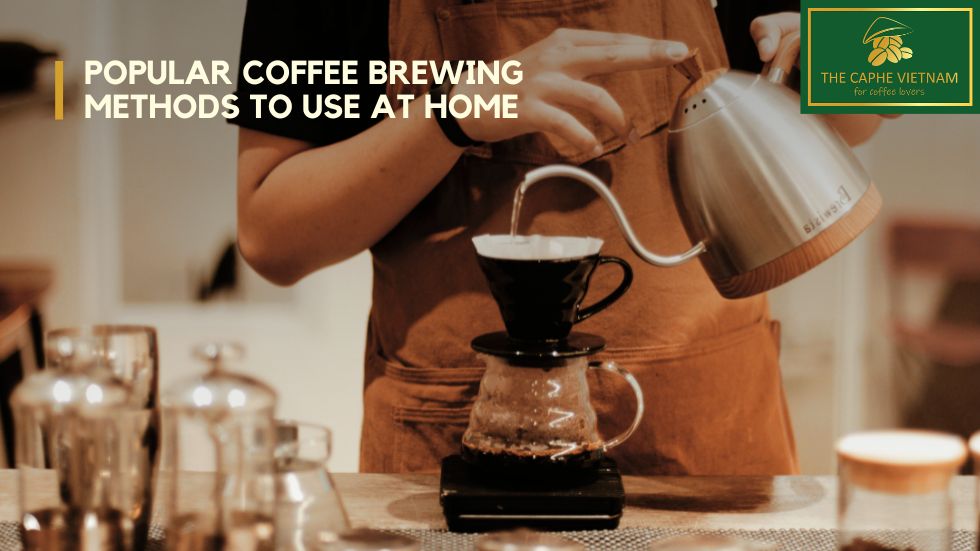Unveiling the Science Behind Different Coffee Brewing Methods and Their Benefits
The Scientific Research Behind Coffee Developing: How Temperature and Time Affect Your Drink
Recognizing the scientific research behind coffee developing exposes that temperature level and time are not simple variables yet critical elements that dictate the drink's taste profile and general top quality. As we check out the nuances of these elements, the question develops: exactly how can one successfully equilibrium temperature and time to attain that perfect brew?
The Chemistry of Coffee Removal
The chemistry of coffee removal digs right into the intricate procedures that change raw coffee beans right into the aromatic drink enjoyed worldwide. This makeover largely involves the solubility of various substances existing in the beans, which are affected by elements such as work size, water high quality, and the brewing method used.
Throughout the developing process, hot water functions as a solvent, drawing out soluble substances, consisting of caffeine, sugars, lipids, and acids, from the coffee premises. Each compound contributes to the flavor profile, aroma, and body of the final drink. As an example, acids are responsible for bright and tasty notes, while oils add to a rich mouthfeel.
The extraction procedure is not consistent; various substances liquify at different rates. The preliminary phases of developing remove acids and sugars, causing an enjoyable level of acidity, while long term extraction can bring about bitterness because of over-extraction of unwanted compounds. Comprehending these chemical communications is important for enhancing brewing methods, as the balance between removal time and water temperature level can considerably affect the total quality of the coffee. Ultimately, grasping the chemistry of coffee extraction is essential to achieving a delicious and all-around cup.
Ideal Developing Temperatures
Locating the appropriate brewing temperature is crucial for unlocking the full potential of coffee tastes and fragrances - coffee brewing methods. Study suggests that the optimum variety for brewing coffee exists in between 195 ° F to 205 ° F(90 ° C to 96 ° C) Within this array, the extraction process successfully liquifies the preferable soluble substances in coffee beans, leading to a savory and well balanced mug
Brewing at lower temperature levels, such as below 195 ° F(90 ° C ), might result in under-extraction, generating an acidic and weak mixture with low-key flavors. Conversely, brewing at temperature levels surpassing 205 ° F(96 ° C) can bring about over-extraction, creating a harsh and bitter preference as a result of the extreme dissolution of unfavorable compounds, such as tannins.
Furthermore, the perfect brewing temperature can differ relying on the coffee bean type and roast level. Lighter roasts often benefit from slightly higher temperatures to improve their intricate flavor accounts, while darker roasts might be better fit to lower temperature levels to reduce anger.
Eventually, keeping precision in brewing temperatures is essential for achieving an unified equilibrium of tastes, making sure that every cup of coffee delivers an enjoyable sensory experience.
Effect of Brewing Time
Developing time plays a crucial duty in figuring out the flavor account and overall high quality of coffee. The removal procedure, which affects the preference, aroma, and body of the drink, is greatly based on how much time the coffee grounds touch with water. Much shorter brewing times can lead to under-extraction, causing a sour or weak taste, as inadequate soluble compounds are dissolved. On the other hand, extended brewing can lead to over-extraction, where unfavorable substances are launched, resulting in an astringent or bitter preference.
Optimal developing time varies relying on the technique made use of and the grind size of the coffee. For example, a French press typically requires concerning find more info 4 mins, while coffee removal is normally finished within 25 to 30 seconds. It is crucial to adjust brewing time in conjunction with other variables, such as water temperature level and coffee-to-water ratio, to accomplish the desired flavor profile.
Comprehending the impact of brewing time allows coffee fanatics to improve their brewing strategies, my company inevitably boosting the sensory experience of their cup (coffee brewing methods). With cautious interest to this variable, one can open the full potential of the coffee, disclosing its distinct features and subtleties
Developing Approaches and Their Impacts

For example, approaches like French press and chilly brew allow for a much longer steeping time, resulting in a fuller body and durable taste due to boosted extraction of oils and soluble solids. Alternatively, espresso developing uses high stress and a shorter removal time, creating a concentrated shot that emphasizes extreme flavors and a rich crema.
Pour-over strategies, such as Chemex or V60, use an even more controlled extraction procedure, enabling the brewer to manipulate circulation price and water distribution, which can boost brightness and quality. Percolation methods cycle water via the coffee grounds numerous times, leading to a stronger, commonly bitter taste.
Finally, the use of paper filters versus metal filters can also influence the final taste; paper filters typically yield a cleaner mug by capturing oils and fine bits, while metal filters permit link even more oils to travel through, contributing to a fuller mouthfeel - coffee brewing methods. Understanding these nuances can raise the coffee experience dramatically
Tips for Developing Your Brew
A well-executed mixture can change also the simplest coffee into an amazing experience. Grind the beans just prior to making to make the most of quality, guaranteeing the grind dimension matches your brewing method-- coarser for French press and finer for espresso.
Water quality plays a vital duty; use filtered water cost-free from contaminations. The ideal developing temperature varies in between 195 ° F and 205 ° F(90 ° C to 96 ° C ) Also hot can scorch the coffee, while as well amazing might under-extract flavors.
Timing is just as vital. For immersion approaches, soaking for 3 to 5 minutes is optimal, whereas drip techniques commonly take around five minutes. Explore brew times to locate your recommended stamina.

Final Thought
In recap, the intricate relationship in between temperature and time is extremely important in the coffee developing process. Complying with optimal brewing temperature levels between 195 ° F and 205 ° F, alongside specific timing customized to each technique, makes certain the preferred flavor account is attained. Recognizing these scientific principles equips people to improve their brewing methods, inevitably resulting in a much more delightful and balanced coffee experience. Proficiency of these aspects is necessary for any kind of coffee fanatic seeking excellence in their drink.
Recognizing the scientific research behind coffee developing exposes that temperature level and time are not simple variables but pivotal elements that determine the drink's flavor profile and general high quality. Recognizing these chemical communications is crucial for optimizing developing techniques, as the balance between extraction time and water temperature level can considerably affect the overall high quality of the coffee.Brewing time plays a pivotal duty in determining the taste account and general top quality of coffee. By focusing on these aspects-- bean high quality, grind size, water temperature, soaking time, and ratio-- you can raise your coffee brewing procedure, resulting in a constantly remarkable mug.
In recap, the intricate relationship in between temperature and time is critical in the coffee brewing process.